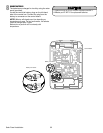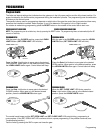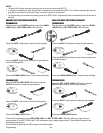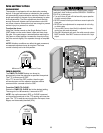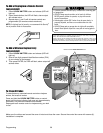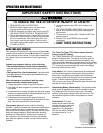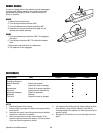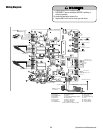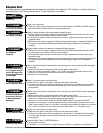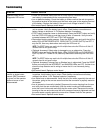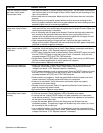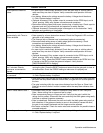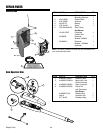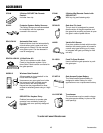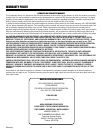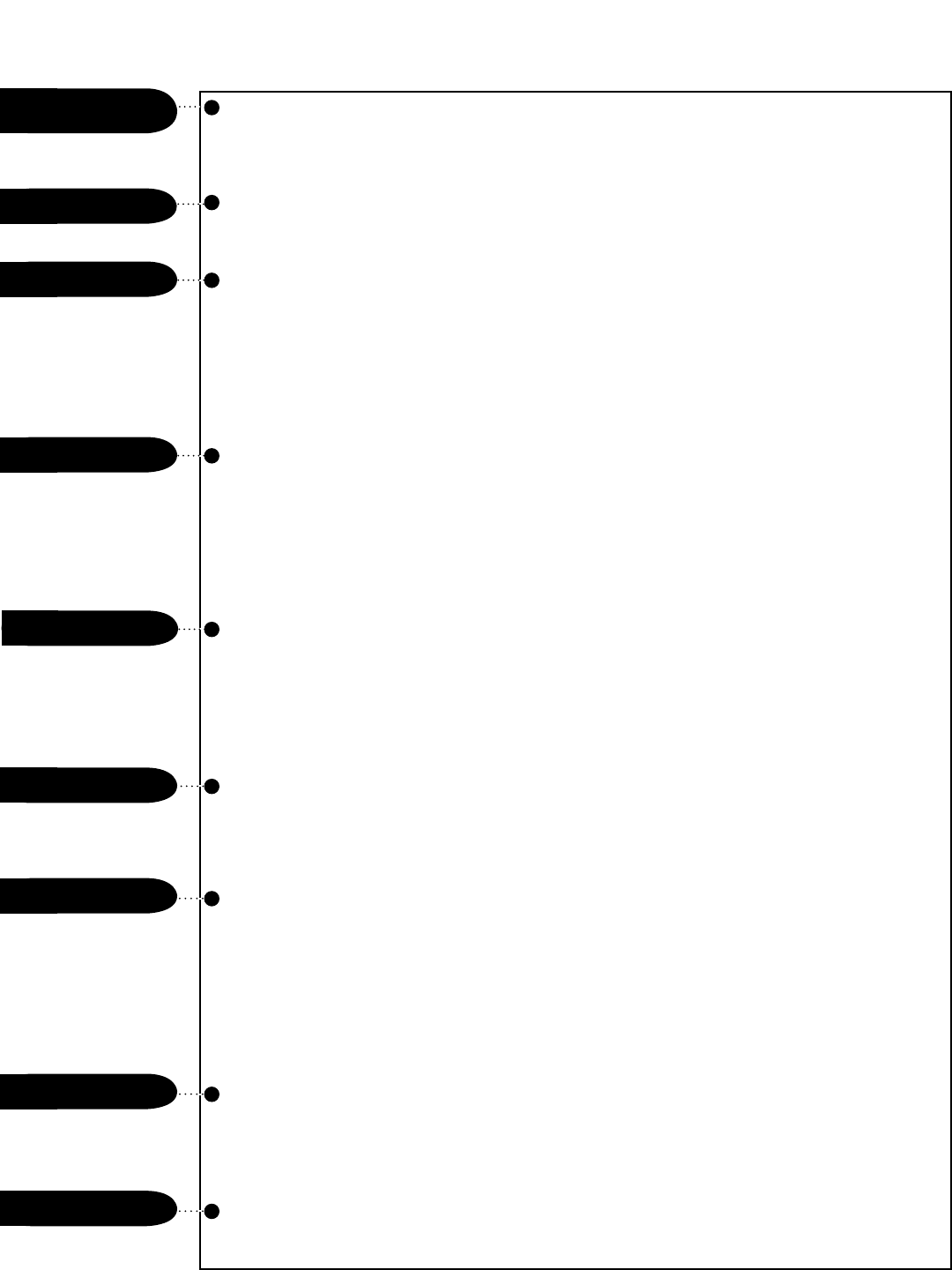
Your gate operator is programmed with self-diagnostic capabilities. The diagnostic LED will fl ash a number of times then
pause signifying it has found a potential issue. Consult Diagnostic Chart below.
Diagnostic Chart
Operator is in sleep mode. Normal Operation
Stop is not connected.
• Check to make sure the jumper wire is connected between the COM and STOP input on
the control board. Stop is an NC (normally closed) input.
Battery voltage is below the recommended operating level.
• Battery may not be properly charged. Disconnect all batteries and make sure AC power
or solar power is connected. Verify AC power outlet.
• Verify that the battery fuses are intact and not blown. Replace blown fuses with same
type and rating.
• Batteries are no longer capable of holding a charge due to age or excessive depleting of
the battery. Replace the batteries (see accessories page). Dispose of old batteries
properly.
Battery does not have the capacity to operate the gate operator.
• Battery may not be properly charged. Disconnect all batteries and make sure AC power
or solar power is connected. Verify AC power outlet.
• Verify that the battery fuses are intact and not blown. Replace blown fuses with same
type and rating.
• Batteries are no longer capable of holding a charge due to age or excessive depleting of
the battery. Replace the batteries (see accessories page). Dispose of old batteries
properly.
Gate 1 has encountered an obstruction or the wiring to the arm is disconnected, damaged
or miswired.
• Make sure the path of the gate is clear and the gate moves freely.
• Incorrect or bad connection to Gate 1 arm. Check the green and white wires on the
motor arm to make sure connections are correct and secure.
• Bad arm or control board.
Gate 1 has encountered an obstruction.
• Make sure the path of the gate is clear and the gate moves freely.
• If there is no obstruction the force adjustment is set too low. Increase the force setting
and verify that the gate moves without reversing and will reverse if an obstruction is
encountered.
Gate 2 has encountered an obstruction or the wiring to the arm is disconnected, damaged
or miswired.
• Make sure the path of the gate is clear and the gate moves freely.
• Incorrect or bad connection to Gate 2 arm. Check the green and white wires on the
motor arm to make sure connections are correct and secure.
• Bad arm or control board. Press the LEARN LIMITS button and press the GATE 2
buttons to move the arm. If the arm does not move continuously, disconnect arm from
Gate 2 and connect the arm to the Gate 1 connector and repeat the attempt to move the
arm. If the arm does not move continuously on either Gate 1 or 2, replace the arm.
Gate 2 has encountered an obstruction.
• Make sure the path of the gate is clear and the gate moves freely.
• If there is no obstruction the force adjustment is set too low. Increase the force setting
and verify that the gate moves without reversing and will reverse if an obstruction is
encountered.
Potential RAM, Flash, or EEPROM failure.
• Turn power off and on.
• If problem is not resolved by turning the power off and on, replace the control board.
Force Reversal Gate 1
RPM Reversal Gate 1
or in manual release
mode. Wiring to the
arm is disconnected
or damaged
Low Battery Voltage
STOP not connected
Power ON
2 FLASHES
3 FLASHES
5 FLASHES
6 FLASHES
CONTINUOUS
FLASHES (Heartbeat)
RPM Reversal Gate 2
or wiring to the arm
is disconnected or
damaged
7 FLASHES
Force Reversal Gate 2
8 FLASHES
Potential chip failure
9-11 FLASHES
Low Battery
Capacity
4 FLASHES
Operation and Maintenance 40



